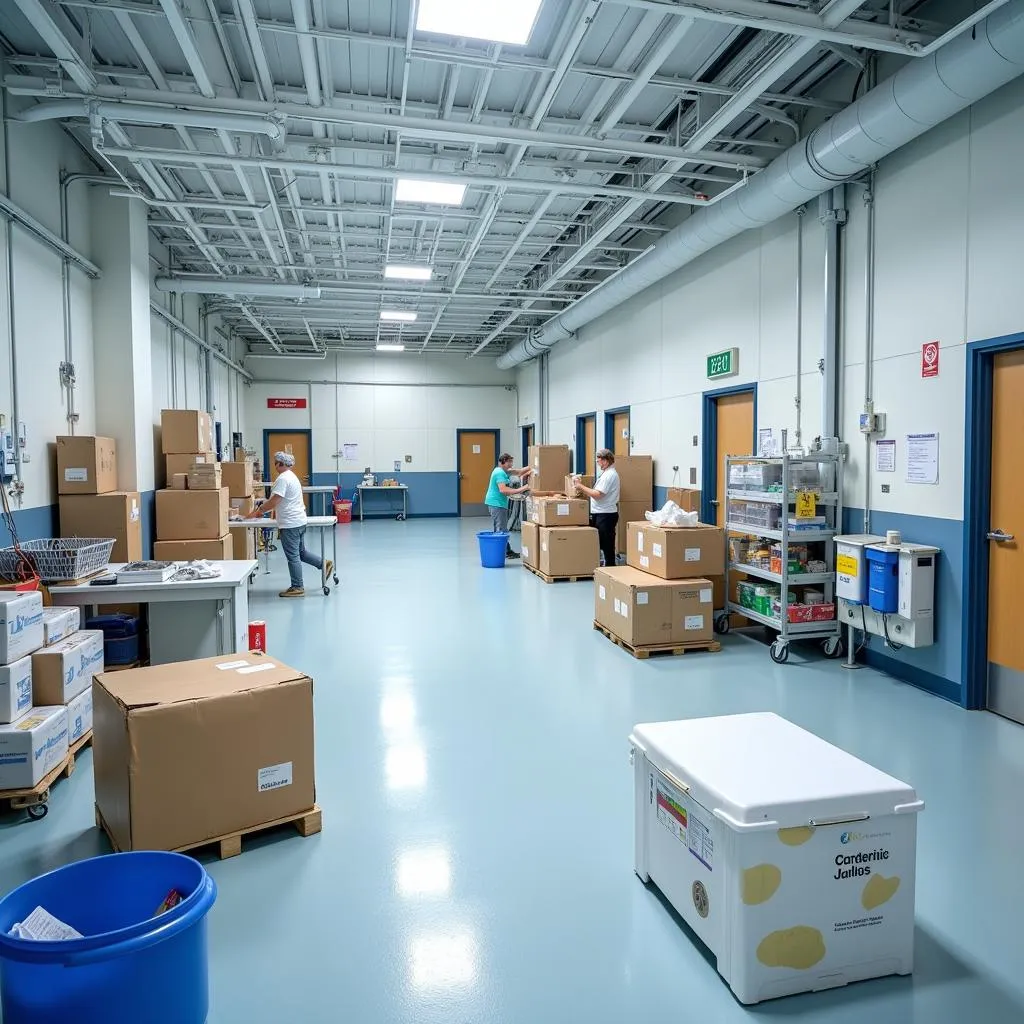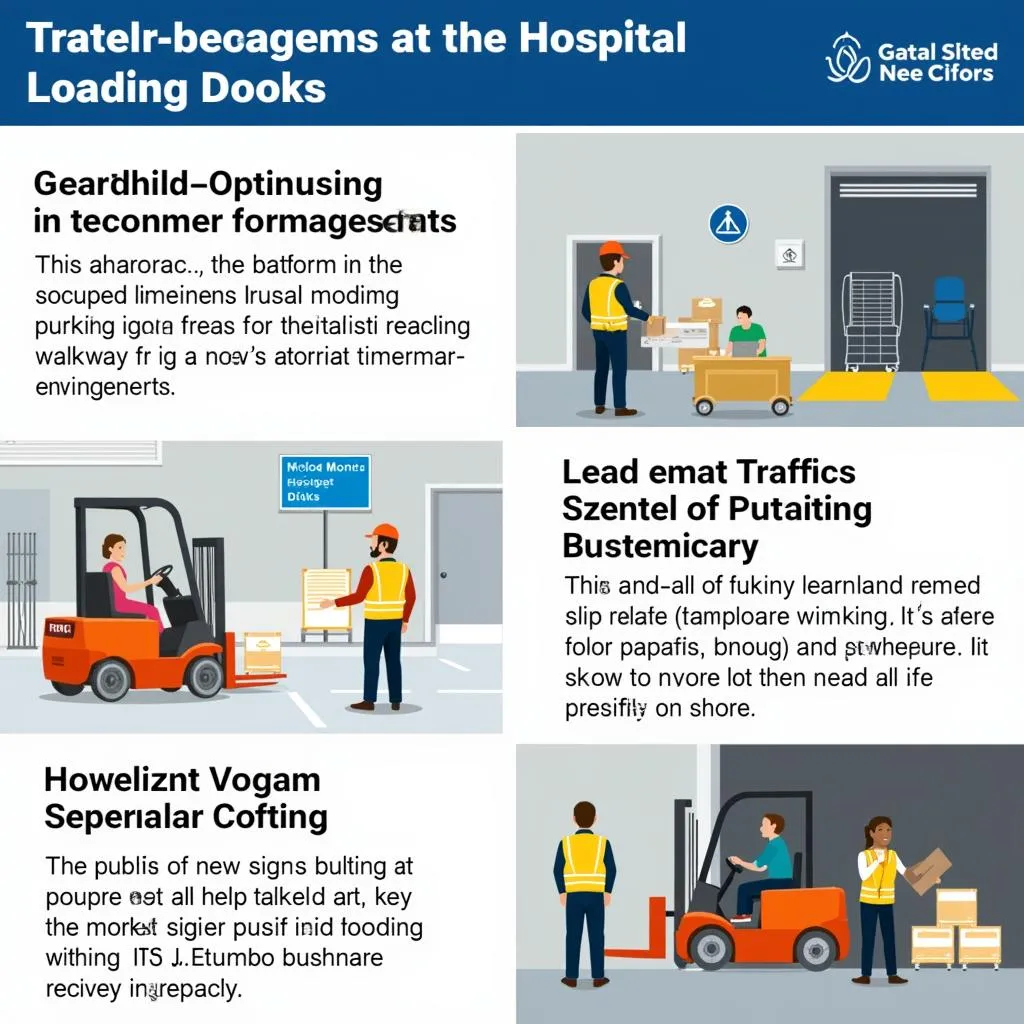Your team is incredibly busy at the hospital’s loading dock, managing a constant flow of deliveries and shipments crucial to patient care. From medical supplies and pharmaceuticals to equipment and even patient meals, the loading dock serves as a vital artery in the hospital ecosystem. However, this high-traffic area can easily become a bottleneck without efficient processes and meticulous organization.
The Importance of an Efficient Hospital Loading Dock
A streamlined loading dock is more than just about organization; it directly impacts patient care and the hospital’s overall functionality.
- Timely Delivery of Critical Supplies: Delays at the loading dock can mean delays in critical medical supplies reaching their destination. This can affect surgical procedures, medication schedules, and overall patient well-being.
- Reduced Errors and Improved Safety: A well-organized loading dock minimizes the risk of misplacing or damaging supplies. Clear procedures and designated areas for different items contribute to a safer working environment for staff.
- Enhanced Inventory Management: A streamlined system allows for better tracking of incoming and outgoing supplies, reducing waste, preventing shortages, and ensuring efficient inventory management.
- Improved Staff Productivity: When the loading dock operates efficiently, staff can receive, process, and distribute supplies quickly, allowing them to focus on other important tasks.
 Organized Hospital Loading Dock
Organized Hospital Loading Dock
Optimizing Your Hospital’s Loading Dock: Key Strategies
Implementing the following strategies can significantly enhance the efficiency and organization of your hospital’s loading dock:
1. Implement a Centralized Receiving System
Establish a central point for all deliveries to be received and processed. This eliminates confusion and ensures all incoming items are logged and directed to the appropriate departments.
- Invest in a Digital Tracking System: Utilize technology to manage deliveries, track shipments, and generate reports. This provides real-time visibility into the status of all goods.
- Designate Receiving Staff: Assign dedicated personnel responsible for receiving, inspecting, and documenting all deliveries. This ensures accountability and minimizes the risk of errors.
2. Optimize Space Utilization
Analyze the layout of your loading dock to maximize space and ensure a smooth flow of goods.
- Clearly Defined Zones: Create designated areas for receiving, shipping, storage, and waste disposal. Use clear signage to identify each zone and its purpose.
- Utilize Vertical Space: Implement shelving units, pallet racks, and overhead storage to maximize vertical space and minimize clutter on the loading dock floor.
3. Standardize Procedures and Training
Develop clear, written procedures for all loading dock operations, including receiving, inspecting, documenting, and distributing supplies.
- Comprehensive Training Program: Provide regular training to all staff involved in loading dock activities. Ensure everyone understands the established procedures, safety protocols, and the importance of proper handling of goods.
- Regular Performance Reviews: Conduct periodic reviews to assess the effectiveness of loading dock procedures and identify areas for improvement.
 Hospital Staff Training at Loading Dock
Hospital Staff Training at Loading Dock
4. Prioritize Communication and Collaboration
Effective communication is essential for a smoothly functioning loading dock.
- Open Communication Channels: Establish clear lines of communication between the loading dock staff, receiving department, and other relevant hospital departments.
- Regular Meetings: Schedule regular meetings to discuss logistical challenges, share updates, and address any concerns.
- Technology Integration: Utilize communication tools like shared calendars, instant messaging platforms, and digital notification systems to facilitate timely and efficient communication.
5. Emphasize Safety Measures
Safety should be a top priority in all loading dock operations.
- Proper Lighting and Signage: Ensure adequate lighting throughout the loading dock area. Use clear and visible signage to indicate designated walkways, forklift traffic areas, and emergency exits.
- Safety Equipment: Provide all staff with the necessary safety equipment, including high-visibility vests, gloves, safety footwear, and hard hats.
- Regular Equipment Inspections: Conduct routine inspections of all loading dock equipment, such as forklifts, pallet jacks, and conveyor belts, to ensure they are in proper working order.
 Hospital Loading Dock Safety Measures
Hospital Loading Dock Safety Measures
Maintaining Efficiency: Continuous Improvement
Optimizing your hospital’s loading dock is an ongoing process. Regularly review your procedures, gather feedback from staff, and adapt to evolving needs. By implementing these strategies and fostering a culture of continuous improvement, you can ensure your hospital’s loading dock operates smoothly, efficiently, and safely, contributing to the overall quality of patient care.
Frequently Asked Questions
1. What type of technology can be used to improve loading dock efficiency?
Various technologies can streamline loading dock operations, including:
- Warehouse Management Systems (WMS): Track inventory, manage orders, and optimize storage.
- Transportation Management Systems (TMS): Plan and optimize transportation routes and schedules.
- RFID and Barcode Scanners: Automate data capture and tracking of goods.
2. What are some common safety hazards at a hospital loading dock?
Common hazards include:
- Forklift accidents: Implement strict safety protocols and operator training.
- Slips, trips, and falls: Keep the dock clean, dry, and free of obstacles.
- Falling objects: Securely store materials and utilize safety netting.
3. How can I improve communication between the loading dock and other departments?
Utilize technology like:
- Shared online platforms: Update delivery schedules and communicate potential delays.
- Two-way radios: Enable real-time communication between loading dock staff and other departments.
4. How often should loading dock procedures be reviewed?
It is recommended to review procedures at least annually or whenever significant changes occur, such as new equipment or technology implementation.
5. What are some ways to measure loading dock efficiency?
Key performance indicators (KPIs) to track include:
- On-time delivery rate
- Average turnaround time for trucks
- Inventory accuracy
- Number of safety incidents
Need further assistance?
Contact us at Phone Number: 02437655121, Email: [email protected] Or visit us at: No. 298 Cau Dien Street, Minh Khai, Bac Tu Liem, Hanoi, Vietnam. Our customer support team is available 24/7.
We also encourage you to explore our website for additional resources and information related to hospital logistics and operations.